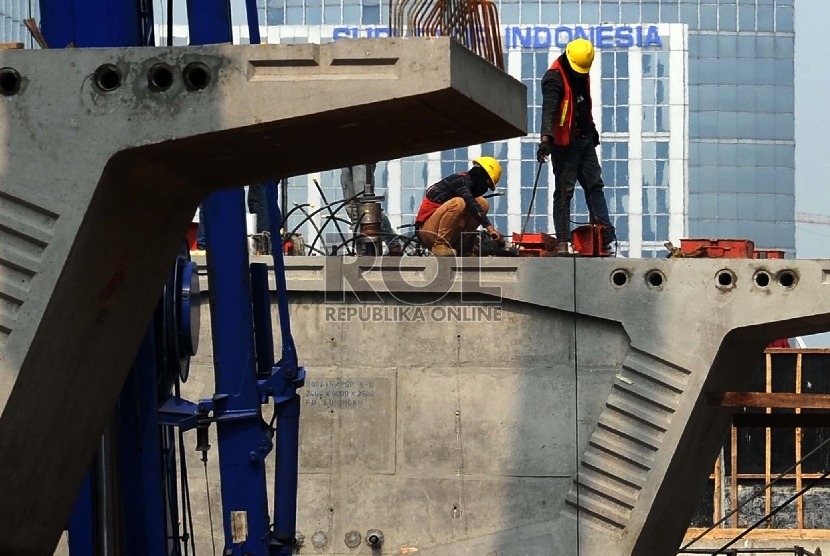REPUBLIKA.CO.ID, By: Otjih Sewandarijatun (Researcher at Indonesian Institute for Strategic Information - LSISI)
The government expected the gross domestic product (GDP) growth would reach between 5.8 and 6.2 percent next year. This is higher than the already ambitious target of 5.7 percent set for this year, despite lingering global uncertainties such as citing China’s slowing economy, volatile commodity prices and the US Federal Reserve’s unclear interest rate schedule. However, the government argued the target would be supported by domestic factors, as it believed various ongoing infrastructure projects would begin to pay off in 2016.
Exports are predicted to surge at an annual rate of 4.8 percent to 5.2 percent, supported by manufacturing sector and products that have higher added value. Imports are expected to climb by 4 percent to 5 percent compared to 2015, with easier access for imports of capital goods and raw materials and to curb illegal imports. The inflation rate is predicted to level at between 3 percent and 5 percent, and the rupiah exchange rate is predicted to hover around 12,800 to 13,200 per US dollar. Meanwhile, the budget deficit expected stand at 1.7 percent to 2.1 percent of GDP in 2016.
Economic Challenges
Meanwhile, the World Bank has cut its 2016 economic growth forecast for Indonesia as uncertainties in the global economy are likely continue. World Bank predicts Indonesia GDP will hover at 5.3 percent next year, as stated in its latest East Asia and Pacific (EAP) Economic Update. The forecast is lower than its previous prediction of 5.5 percent for 2016, which was contained in its Indonesia Economic Quarterly (IEQ) report, issued in July, but is at the same level as the government’s target for next year. The overall 2015 forecast is unchanged at 4.7 percent. According to the new EAP report, weak commodity prices are expected to continue into 2016 putting pressure on corporate profits and incomes in Indonesia thus constraining domestic demand growth.
World Bank attributes the 2016 growth projection to the ongoing downturn in China, which has impacted Indonesia that has close links to China. Central Statistics Agency (BPS)’s data show China is Indonesia’s major partners, with non-oil and gas exports accounting US$ 8.87 billion throughout the year, the second-largest export destination after the United States (US). The Downturn in China is likely to affect Indonesia economy performance.
Furthermore, other challenges, which most academia has warned that an ongoing oil-price slump might not only bring the benefits of cheap oil to Indonesia, but could also lead to harmful effects from shrinking revenue. Rating agency Moody’s Investors Service estimated that, if the global oil price averages at $60 per barrel throughout next year, Indonesia’s annual current-account deficit — the major worry among foreign investors — will shrink to 1.9 percent of GDP. The government also has predicted that the gradual Fed Funds Rate hike is going to start imposing in 2016 will put pressure on Indonesia’s economy at least until 2018. The gradual increases since, this mid-December, of the Fed Funds Rate would trouble countries that are experiencing current-account deficits, such as Indonesia.
Exit Strategy
Amid those challenges, domestics factor still provide room to take advantages the opportunities. Investment activities, especially in infrastructure, which are scattered throughout many regions will be the main driver of the economy, which will be more focused on unlocking regional potential as well. Investment and government spending are expected to have improved next year. If infrastructure projects run smoothly, it will mean that investment prospects will be brighter and logistics costs will decline. In its 2016 macroeconomic assumptions the government estimates that infrastructure improvement will help increase investment performance by between 8.6 percent and 9 percent year-on-year.
There is a need to find a boost for growth in consumer spending in the economy. In the past, it used to be commodities. Fiscal spending remains the key for faster GDP growth going forward. The government has to push through its ambitious infrastructure development plans and further improve business conditions to attract private investment, so that it can achieve a sustainable return to higher and more inclusive growth. Budget execution is a key challenge, especially because local governments have limited implementation capacity, but are expected to receive higher infrastructure spending allocations in 2016.
Last but not least, another exit strategy is to optimize the village funds to boost village’s economic development. The main objective of the village funds is to develop public infrastructure that will have a multiplying impact on the people's economy in villages. Most of the funds were used to develop public infrastructure which involved and empowered the people in rural areas. The government could increase the productivity and improve the welfare of village people by empowering and involving them in the construction of public facilities. Thus, the economic benefit accruing through infrastructure development could be multiplied. *



